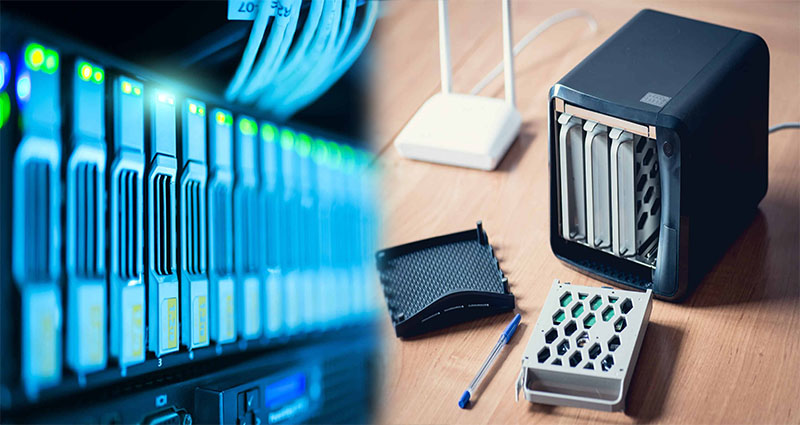As digital data continues to grow in importance, ensuring its safety and accessibility becomes a top priority for individuals and households. Network Attached Storage (NAS) devices have become a popular solution for secure and reliable data storage at home. NAS systems not only provide ample storage capacity but also offer automated backup and data redundancy features, providing peace of mind and protection against data loss.
Understanding NAS Storage
NAS storage refers to a dedicated device or server that provides data storage and file-sharing capabilities over a network. These devices are designed to be easily accessible by multiple users and allow for centralized storage, making them an ideal solution for homes with multiple devices and users. NAS systems can be customized with various features, including automated backup and data redundancy, to ensure the integrity and availability of data.
Automated Backup
Automated backup is a crucial feature offered by NAS systems, allowing users to schedule regular backups of their important data. Instead of relying on manual backups that are prone to human error or forgetfulness, automated backup simplifies the process by automatically copying and storing data from selected devices or folders according to a predefined schedule.
With NAS devices, users can set up incremental or differential backups, which only copy the changes made since the last backup. This saves storage space and reduces backup time, making the process efficient and less resource-intensive.
Data Redundancy
Data redundancy is another essential feature that NAS systems offer. Redundancy refers to the duplication of data across multiple drives within the NAS device, ensuring that there are multiple copies of data available in case of drive failure. By employing data redundancy techniques such as RAID (Redundant Array of Independent Disks), NAS devices provide protection against data loss due to hardware failures.
RAID configurations, depending on the level chosen (RAID 0, RAID 1, RAID 5, RAID 10, etc.), distribute data across multiple drives, enabling continuous operation even if one or more drives fail. In the event of drive failure, the NAS device can automatically rebuild the data using the redundant copies, minimizing downtime and preventing data loss.
Versioning and Snapshotting
NAS systems with advanced backup features offer versioning and snapshotting capabilities. Versioning allows users to keep multiple versions of a file, enabling retrieval of previous versions in case of accidental modifications or deletions. This feature is useful for maintaining a history of changes or for recovering from unintended data alterations.
Snapshotting takes versioning a step further by capturing a snapshot of the entire system or specific folders at a particular point in time. Snapshots provide a read-only view of the data, allowing users to restore files or folders to a previous state quickly. This feature is essential for protecting against ransomware attacks or other instances where data integrity is compromised.
Benefits of Automated Backup and Data Redundancy with NAS
Data Protection and Availability
Automated backup and data redundancy features provided by NAS systems ensure that critical data is protected and available at all times. By regularly backing up data and storing redundant copies across multiple drives, NAS devices safeguard against hardware failures, software issues, or accidental data loss. This ensures that important files, documents, or media remain intact and can be easily restored when needed.
Convenience and Peace of Mind
With automated backup and data redundancy, users can enjoy peace of mind, knowing that their data is being protected without any manual intervention. The scheduled backups and duplication of data happen seamlessly in the background, reducing the risk of data loss. This convenience allows users to focus on their work or activities without worrying about data backup and recovery.
Quick Recovery and Version Control
In case of data corruption, accidental deletions, or other unforeseen incidents, having automated backups and versioning capability allows for quick recovery. NAS devices can restore files or entire folders to their previous states, minimizing downtime and ensuring that valuable data can be retrieved.
Scalability and Future-Proofing
NAS systems offer scalability, allowing users to expand their storage capacity as their data needs grow. With automated backup and data redundancy features inherent in the NAS device, users can seamlessly incorporate additional drives or upgrade their RAID configuration without data loss or disruption. This future-proofing capability makes NAS a flexible, long-term solution for data storage needs.
Automated backup and data redundancy features offered by NAS storage devices bring peace of mind, protection against data loss, and ease of use to homes. With scheduled backups, data redundancy, versioning, and snapshotting capabilities, NAS systems ensure the safety, availability, and quick recovery of valuable data. By investing in a NAS storage solution with these features, individuals can enjoy reliable data protection and convenient access to their files, ensuring that their digital assets are secure and readily available.











